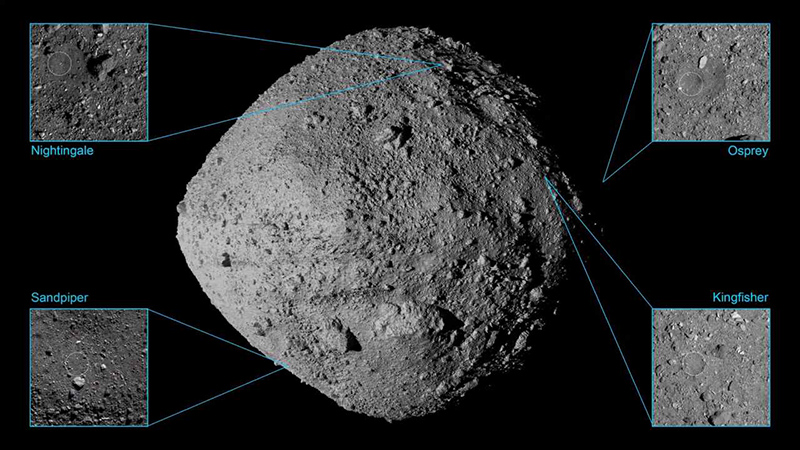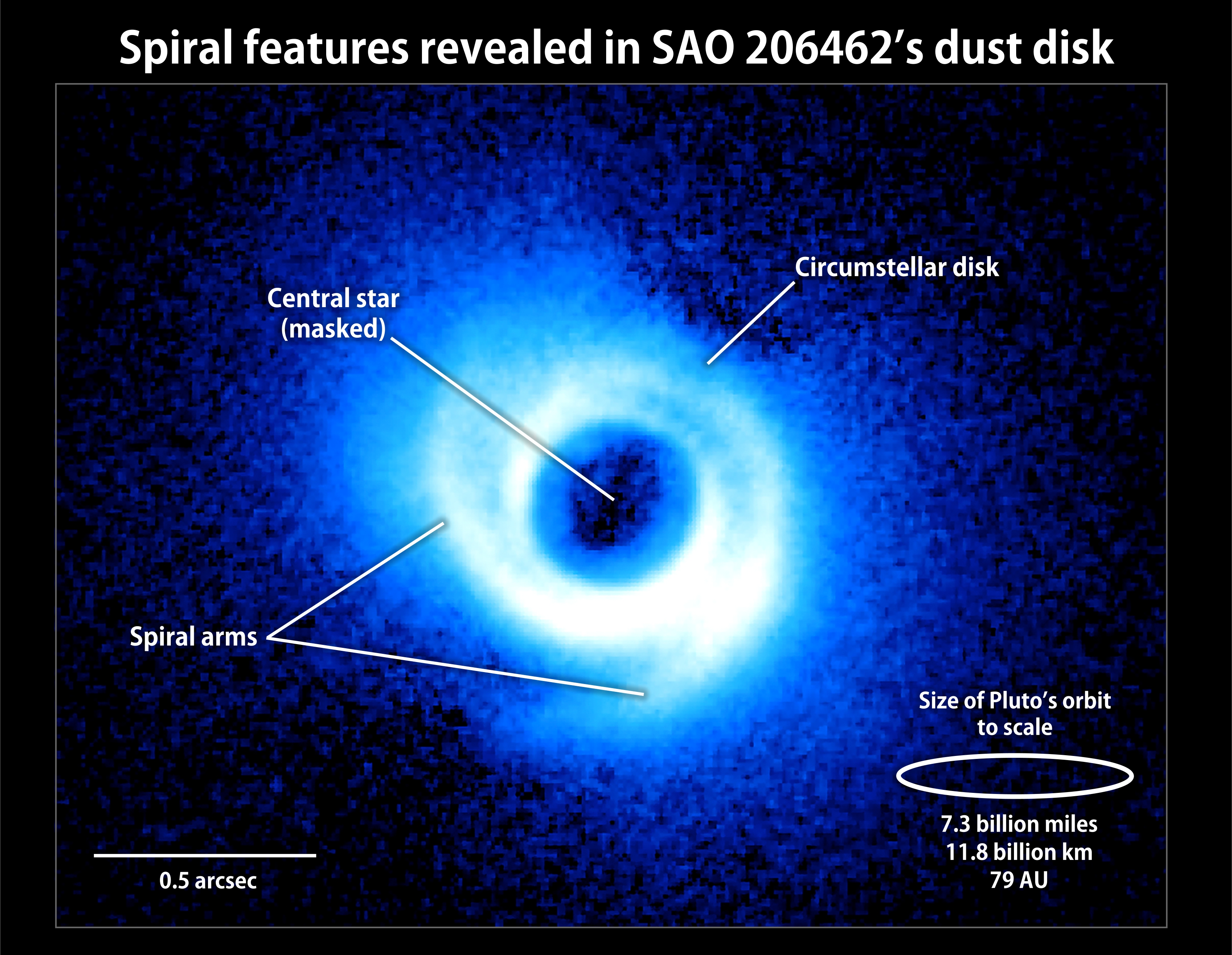Solar System Evolution:
Let's start with some related ideas which will seem unrelated. Look at this image of soil testing (thank to Today's Homeowner for the link) that we can all do in our homes to understand the constituents of our soils.

What parts of the soil fall out first and which later? Why is that?
The core idea here is that in an environment where there are competing forces denser objects tend to be pulled 'downwards' and separated from the less dense objects.
Then lets follow along with Neil deGrasse Tyson and NOVA to look at this presentation of our current state of knowledge about the formation of the solar system. (as you watch keep thinking about the scale of objects being presented and how that relates to our previous discussion). We will no doubt stop this video clip along the way to chat.
Questions That Arise:
There are a number of questions that arise as we think about what Dr. Tyson and other present. Let's start with need for 'lumpiness'.
'Lumpiness':
The issue here is that when material is spread out relatively uniformly then there is not enough gravitational force to draw the material together. Generally the universe is a pretty uniform place except where there are stars. The clouds of 'dust' that we saw in the lab are a clear exception. As a result one of the basic questions about the evolution of the solar system is how the lumpiness got started. One model is the one that Dr Tyson presented about super nova shock waves. We have other evidence for these shock waves so that is at least a possibility. When we look at the structure of galaxies many show spiral arms that represent regions where the gasses are more compressed. The observation that stars seem to form along those spiral arms suggests that these regions are intrinsically more lumpy. Once some lumpiness is established they will tend to grow as the lumps gather more material through gravity. At a larger scale the asteroid Bennu is an example of the growth of lumps of stuff. Hard to say that this asteroid looks like anything besides a pile of rubble. Being a bigger lump Bennu has drawn smaller lumps to it.

Stuff That's NOT Hydrogen:
It is constantly stated that almost all of the universe is made of hydrogen. That being the case where did all this rock stuff come from? If we imagine a lumpy region of hydrogen gas one would expect it to clump into ever larger and denser lumps of hydrogen gas. This will lead to stars and things like Jupyter but doesn't get us rocks. As we will find when we consider our understanding of stars all of the stuff that makes up the rocks (and by extension most of the inner planets in the solar system) can only be formed during the death of a star in a super nova. We tend to think of super novae as pretty unusual and unlikely which feels like a bit of a conflict. We'll talk more about this as we discuss stars and stellar evolution in the coming weeks. All of this suggests that our solar system was not formed early in the evolution of the greater universe because the earth and humans are made of material that appears to have come along later in the process.
Human Challenges With Time:
Our lives are vanishingly short on the scale of planets and stars. This makes it hard for us to grok what can happen over long periods of time. Here's a potentially helpful example. Think about any of the forests in the Cascades. When we go walking we always see some trees that have been blown down by the wind and have torn up a large root ball. Typically a forest will have several hundred trees for each acre (4000 m2). When a tree falls down it turns over about 10 m2 of the forest soil. If you walk through a forest how often do you imagine you will see a recently downed tree? Every 10 yrs, 20 yrs, or 100 yrs? Lets take 100 yrs as a possibility that seems on the high side. If it takes 100 yrs to turn over 10 m2 of the forest soil how long does it take to completely turn over the whole acre? Looking at the units we see that yrs = 4000 m2/(10 m2/100 yrs) = 40,000 years. This seems like a long time but it is very short on the time scale of the earth. This suggests that the entire surface of the earth is rototilled 20 times every million years and maybe much more often than that. This is what can happen if you have lots of time. If it takes a few hundred million years for things to clump together in the formation of a solar system that seems long but on cosmic time scales it's like the first year of your life.
How Much Time Would it Take?
A natural follow on to the previous discussion is the question of how long it might take for these lumps to form and draw enough material together to form a solar system. We do this by creating computer models. An example of this is embedded below. It feels important to note that none of this sort of simulation was possible before we created the modern computer with it's remarkable computational power. Only 60 years ago there were no meaningful computers that could do this sort of work. Almost all of this work has taken place since the late 80's when mainframes (a large shared computer that was only slightly more powerful than your phone) became common at universities. Astrophysics and our ability to try to answer some of these questions through simulations really started to take off in the late 90's. This is new and powerful stuff in the history of science!
If we take a simulation like this and change the initial conditions (make it less lumpy or more lumpy) we can see that the amount of time it takes to form a solar system can get unreasonably long or ridiculously short. This helps us think about what might be possible and what we might expect to find when we visit asteroids or comets which appear to have been around since the origins of the solar system.
Why is the Solar System a Pancake?
Even if we do get some lumps in some region of space why would that lead to a solar system shaped like a pancake? Here the useful analogy is to think about what happens when you pull the plug out of a sink full of water. As the water flows towards the drain it almost always starts to swirl and make a funnel. This is an example of a physics principal called 'conservation of angular momentum'. This also happens in storms and it's why hurricanes have that lovely spiral structure. You may be aware that 'hurricanes' in the southern hemisphere are called cyclones and spin the opposite direction. This is also consistent with this physics principle. Applying this now to the formation of the solar system we would expect that as the largest lump in the area starts to pull everything else towards itself, like the drain in the sink, all of the material will start to rotate in some direction. This will tend to flatten everything out into a pancake with all parts of the proto-solar system rotating in the same direction. Smaller lumps in the overall disk will also 'spin up' in the same way as they draw material into themselves which offers an explanation for the rotation of all the planets.


Inner Planets/Outer Planets
If the original cloud of material that became the proto-solar system had some denser material (rocks made of iron, aluminum, silicon and other heavy atoms) and less dense material (like hydrogen and methane) you would expect the denser material to move towards the dominant lump in the area more rapidly. It makes a rough kind of sense that denser rocky planets would be closer to the main mass of the system and the less dense planets would be further away. If the cloud that formed the proto-solar system had very little dense material in it there might only be gasseous planets in such a solar system and some might be quite close to their star.
What Happened to All the 'Dust'?
One would imagine that even after the solar system formed that there would still be plenty of dust floating around that hadn't been captured by one of the lumps. Generally the solar system is remarkably empty. This is due to another surprising effect -- sunlight can push things! Sunlight acts like a very wimpy wind and can push objects around. Small particles of dust actually experience a great force pushing them away from the sun than gravity can overcome. This is what cleared all the small dust out of the solar system once the sun lit up. This is also the same effect that we saw in the first lab that produced the cones of dust all 'pointing' the same way. At the tip of the cone is a more dense lump of stuff which is protecting the dust behind it from the starlight pushing it away. The starlight is also eroding the 'lump' and may eventually destroy it.
An interesting example of this is the OSIRIS probe which just collected a sample of the asteroid Bennu pictured earlier. Because Bennu is so small the probe actually had to account for sunlight trying to push it out of orbit around the asteroid. Both the gravity from Bennu and the pressure from the sunlight were comparable forces. Hard to imagine.
Activity: What other questions do you have about the origins or characteristics of the solar system? This is an opportunity to bring additional questions to the table that your instructor hasn't thought of. This is also an opportunity to practice being respectful of the ideas and understandings of others. Ask what reasonable understanding leads to the question. Consider what data might help answer the question.
Evidence:
The evolution of the solar system is a deep deep rabbit hole and the Lunar and Planetary Institute has a lovely resource that we could explore for days (I've only looked a little). Feel free to look at things that interest you and see what questions it provokes. These days we can see things out there in the universe that weren't imagined when I went to school. We have actual images that seem to be of solar systems in the process of forming elsewhere in the universe. Here's a NASA image of an actual planet forming disk around a star - very cool.

HW: Solar System Evolution
Take a look at this data table of exoplanets around other stars. If you select a given column in the table it will put all the planets in order of that parameter. First explore the orbital periods of these planets. Roughly how many of these planets have a year which is between 300 and 400 days? Depending on how bright their 'sun' is these exoplanets might be similar to earth. Are you surprised how many there are?
HW: Solar System Evolution
Looking at the same data table of exoplanets notice that the estimates of the size of the exoplanet are listed in term of the mass of Jupiter (mJupiter). What is the ratio of the mass of earth to the mass of Jupiter (from the planetary data table given at the top of the homework)? You will have noticed that many of the exoplanets have no listed mass (because this is harder to figure out). Sort this colum and see how many exoplanets are thought to be similar to the size of the earth? Are you surprised by this number?
HW: Solar System Evolution
Here is a video about a particularly surprising asteroid event in 2017. Watch the video and explain why we believe that this asteroid came from another solar system and not our own. Your answer will reflect your understanding of the discussions in this breadcrumb.
Assignment: HW: Solar System Evolution
Complete and assemble your solutions to all the HW problems listed here. Scan to a pdf and turn in on LMS. Please review HW format expectations for guidance about your homework solutions.
Reading Ahead:
Next time we will continue our explorations of the solar system on the Solar System II breadcrumb. This will support our discussion about the formation and evolution of our solar system.
